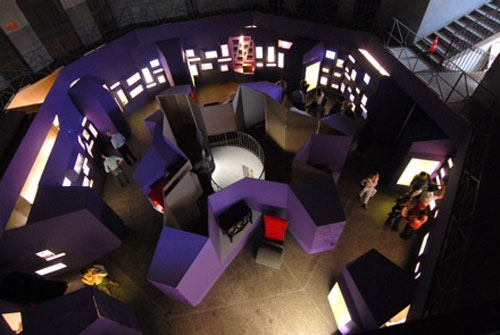
“Everybody knows that our cities were built to be destroyed” sang Caetano Veloso back in 1971. The first verse of “Maria Bethânia,” a song the Brazillian singer dedicated to his sister and wrote while in political exile in London, speaks to us of urban and social revolution, of inevitable change and ultimately (you have to listen to the whole song though) of a desire for betterment, for improvement of (Brazillian) society. A disenchanted Caetano sung then about flats bought by the sea and giving your soul to the devil: affluence and stability were not synonymous with freedom under the Brazilian – but also the Portuguese – totalitarian regime. Thirty-something years later, is that still the case?
We have freed ourselves from our dictators, seem to be learning to live together in a globalised planet, and have embraced a peaceful world order, freed from ideology, where there is hardly any place for revolution. All we are left with is evolution: we must progress, adapt, learn to live in increasingly uncertain conditions. Nothing lasts forever anymore, so we must trust our own survival instincts. We must become flexible in order to exist, to evolve, to make sense of what is going on around us. But is something still holding us prisoner?
Our social well-being continues to rely heavily on the consumption of goods and services – not even communism, recession or most religions have changed that. Our desire to be financially stable and able to be surrounded with necessary material – and increasingly immaterial – possessions often surpasses the need to live in a fair and lawful state, where basic freedoms – of speech, of vote or of religious practice, to name only a few – are observed. Just think of China, Russia, Dubai and most of the African continent. Does that mean we can achieve freedom, or even happiness, through acquisition?
Design, perhaps the most optimistic of human activities, seems to believe that. With the utopia of modernism long gone, it seems to stand today on the firm belief that society, in order to progress, must continue to consume and promote better, improved objects, products and systems. Through their activity as observers, interpreters and form givers, designers and other “creative professionals” continue to come up with solutions for our everyday needs – from the most fundamental to the most frivolous – (re)creating new pieces of our living puzzle. They create, or give a face to, the stuff that surrounds us.
And their role in shaping our material lives and our post-industrial culture is also becoming increasingly recognised, as the exhibition Flexibility – Design in a Fast-Changing Society proves. Aptly housed in a former prison, it shows us not how humans have become flexible over the last century, or are even superflexible now, but how designers have been interpreting that need for flexibility. This is not an exhibition about how people use objects or systems in a flexible way – such “undesigned” uses often have unpredictable, even disruptive results. This is rather an exhibition that shows us how designers tell users or consumers how to be flexible, or how they mediate that need by creating the interfaces we deal with on an everyday basis. The Panopticon, an “all-seeing eye” of past and present examples of products, devices, platforms and systems, contains all those things that have been allowing us to work more, do more, multitask, to get more out of our cities, houses, bodies, and most of the shorter and shorter days of our longer and longer lives. Ultimately, it is a showcase of creations that give us back some of the freedom we’ve been losing in order to work, consume and enjoy all those things we can’t live without – if we can only afford them.
This is not however a dystopian vision of a “designed world” – design doesn’t “do” dystopia, and the nine personal installations/visions of flexibility on show are there to prove it: they are like rhetorical escape routes from this material, designed prison we are confined to. And by finding them inside and around the walls of a prison in Turin, the metaphor becomes even more blatant: if we are indeed made to be flexible, we are far from being free. So in the end, Caetano was wrong: cities must not be destroyed to be liberated. Like all the things they contain, cities must face change, adapt and reinvent themselves in order to survive. And we will always need designers to show us the ever-changing path to redemption.
Originally published in Cluster Magazine #7. This text followed Cluster editor Marcia Caines’s request to Guta Moura Guedes’s (Flexibility’s curator) to suggest a Portuguese design critic who could add a perspective to the exhibition in the magazine: “An article written by a designer/curator/artist/ on Flexibility. This is intended as an in-depth look at Flexibilty; the concept and the message/legacy that the exibition intends to leave to its public (local and visiting) in Turin. (It could also be a nice idea to feature or involve in some way Lisbon as a city in these pages, linking it up in some way to Flexibility – Cluster is very interested in cities, their dynamics, functions, systems and personalities).”
Comments are closed.